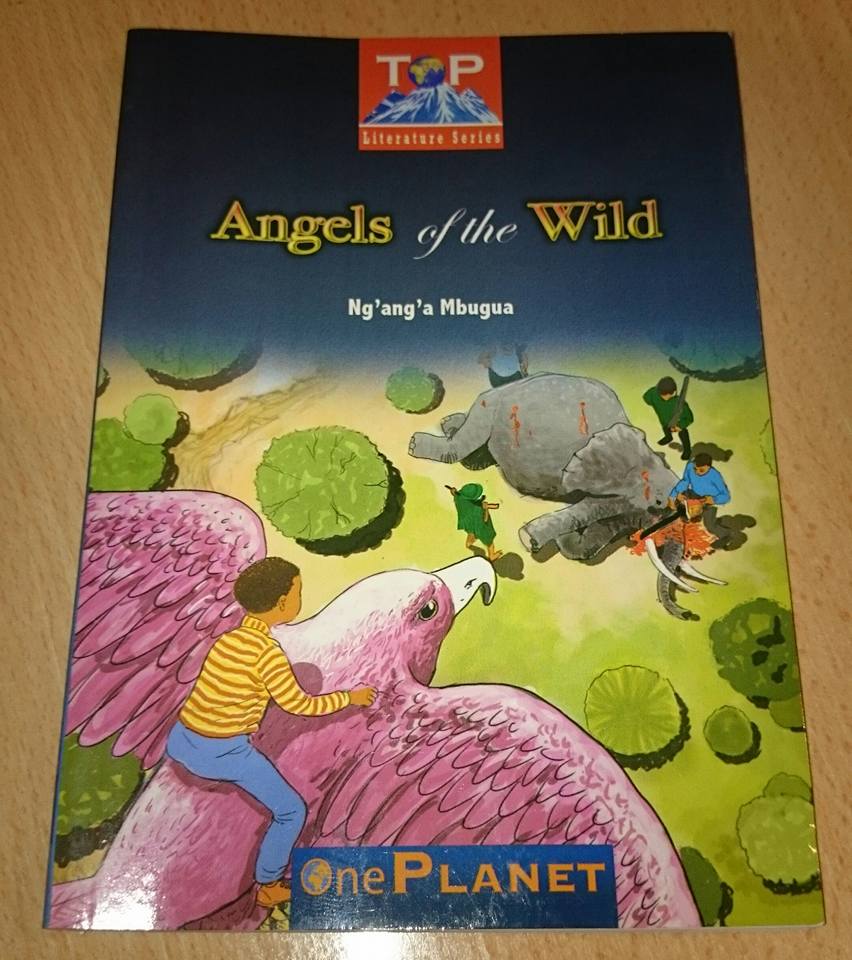




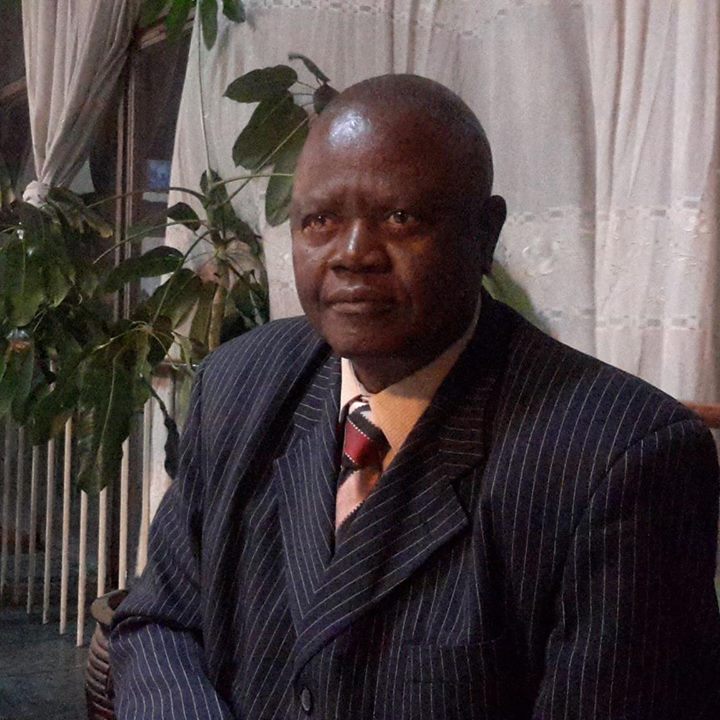
Kenyan book lovers, on Saturday October 17, woke up to an excoriating piece of criticism aimed mostly at literary critics of the University of Nairobi. The writer Harry Mulama, in not so many words, dismissed them as a bunch of washed up incompetents.
Pricked to the quick, Prof Chris Wanjala, who was especially heavily targeted, took to his Facebook page to respond. Read his response, verbatim, below.
“What a reading on an October morning before the 20th when we celebrate Mashujaa day? Does the author know the pain of keeping the literary discourse going for all these years. If we had not written would Harry Mulama have had anything to rant about? He is looking for answers outside us,outside Kenya. It is like the proverbial child who thinks that this is not his mother and looks outside for surrogates. Let us see how far Harry Mulama will go.
As a colleague has mentioned this morning,the question we ask is, “Who is behind Harry Mulama ?” His article cites very few cases of the works that have been written by members of the academic staff of the Department of Literature Depth Uon .I know in the article like his, he would not have had enough space for quotations, references and different works and ideas. But at least he needed to contextualize and make comparisons.
And even then, the discipline of literary criticism is growing and multiplying and depending on many people, including Harry Mulama,to move it into new areas. The evidence of this is all over in this country, not just at the University of Nairobi, but at Kenyatta, Moi, Egerton, Maseno, Masinde Muliro, and private universities like Daystar.
We are not doing badly at all and no one is going to create sheep and goats in the discipline.
All the people that Harry Mulama mentions belong together. Why do people who fail to either get a degree from the University of Nairobi and/or get a job there resort to hiding
in the bush and begin throwing stones at the reputable scholars who keep knowledge flowing in Kenya? Look around this country’s universities and tell me how many professors, senior lecturers and lecturers there the Department of Literature at the University of Nairobi has trained, examined and rewarded higher degrees. You just need to look at the list of high degrees the Department of Literature at the University of Nairobi when it gave Dr Eddah W. Gachukia a PhD on “Cultural Conflict in East African Literature,” and she now the founder of Riara University to see our influence and impact. You will come to the winner of the 2015 Burt Award, Christopher Okemwa who now teaches in Kisii University, wrote: “Mushida’s Cooking Pot: A Creative Exploration of Women Issues in Kenya.” for his MA qualification at the UoN, in 2008, and scholars like Dr John G.O. Mugubi, Kamau wa Goro, Dr. Sophie Macharia, Dr Kweya G Kweya, who are teaching in other universities, and Dr Kisa Amateshe of Kenyatta University, to know the expanse of the UoN’s influence.
Even those Harry Mulama is extolling like Professor Simon Gikandi and James Ogude are University of Nairobi products. Professor Evan Maina Mwangi, who operates from
the US, was our MA and PhD student. He wrote a thesis entitled: “Stylistic Reciprocity Betweeen Textual Errancy and Cohesion in David Maillu’s Broken Drum,” for his Master’s in 1997.
Is Harry Mulama’s not the story of the proverbial rabbit who could not get fruits from a tall tree and ended up saying, “After all those fruits are not ripe?” If Harry Mulama has some writers who can write better than us, why does he not get them to come forward and write for the Saturday Nation? If he thinks we are not worthy academics, why, in this free and democratic country, can’t he train his own and have them do the job of literary scholarship?
We may not be the best but we are what you have and we are expressing the fears, hopes and aspirations in the discipline of literature, which even the best can deal with. This shameless attack is a case of infantile radicalism coached in demented cowardice.”
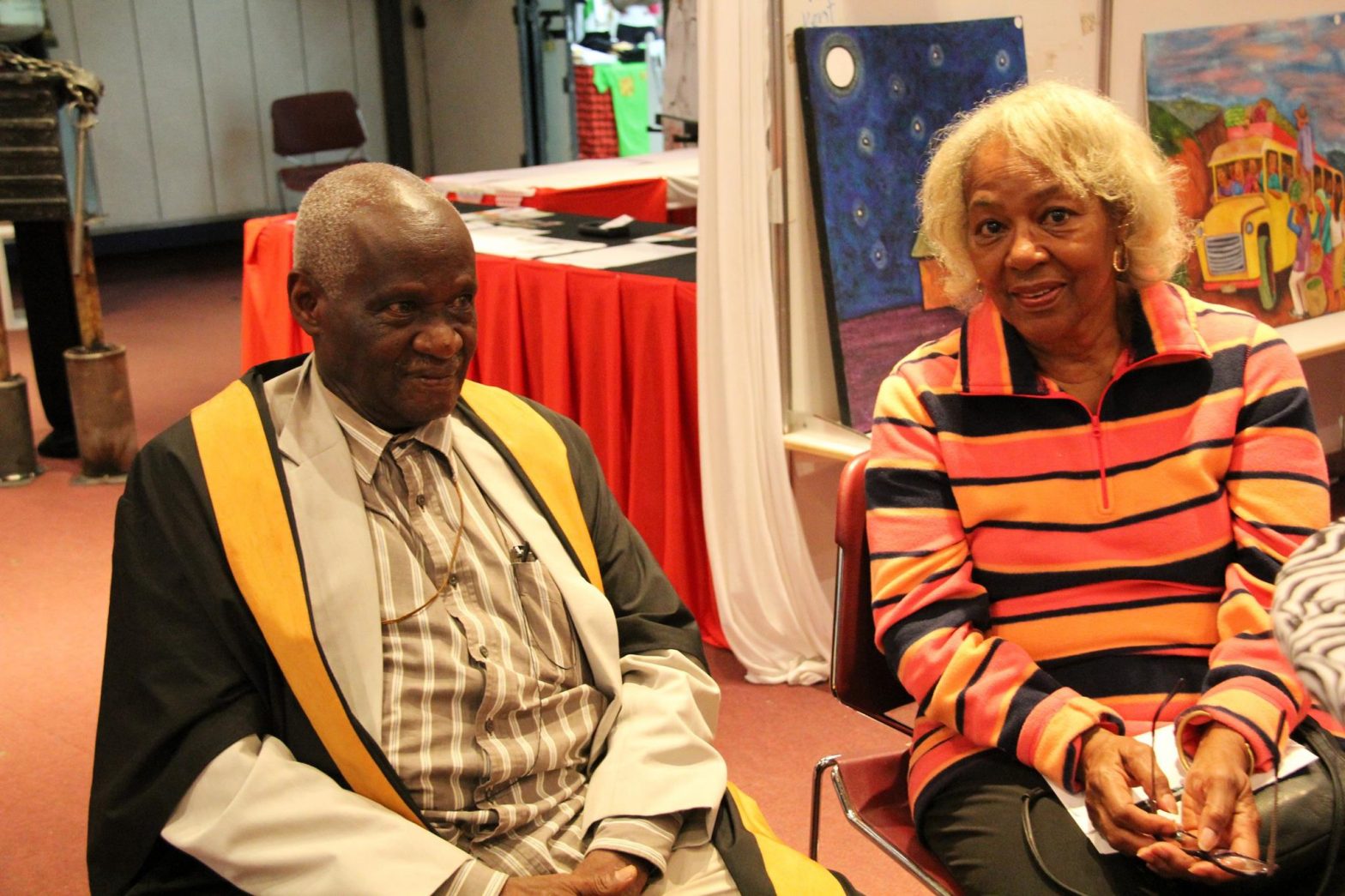
Paa ya Paa Art Gallery is calling on artists who have their artworks stored there to collect their pieces, apparently because they are running out of space. In a Facebook post made on Thursday July 16, the centre invited the artists for chai – probably the delicious grass tea made by the generous host Mzee Elimo Njau – on Saturday July 18, at 10.30 am.
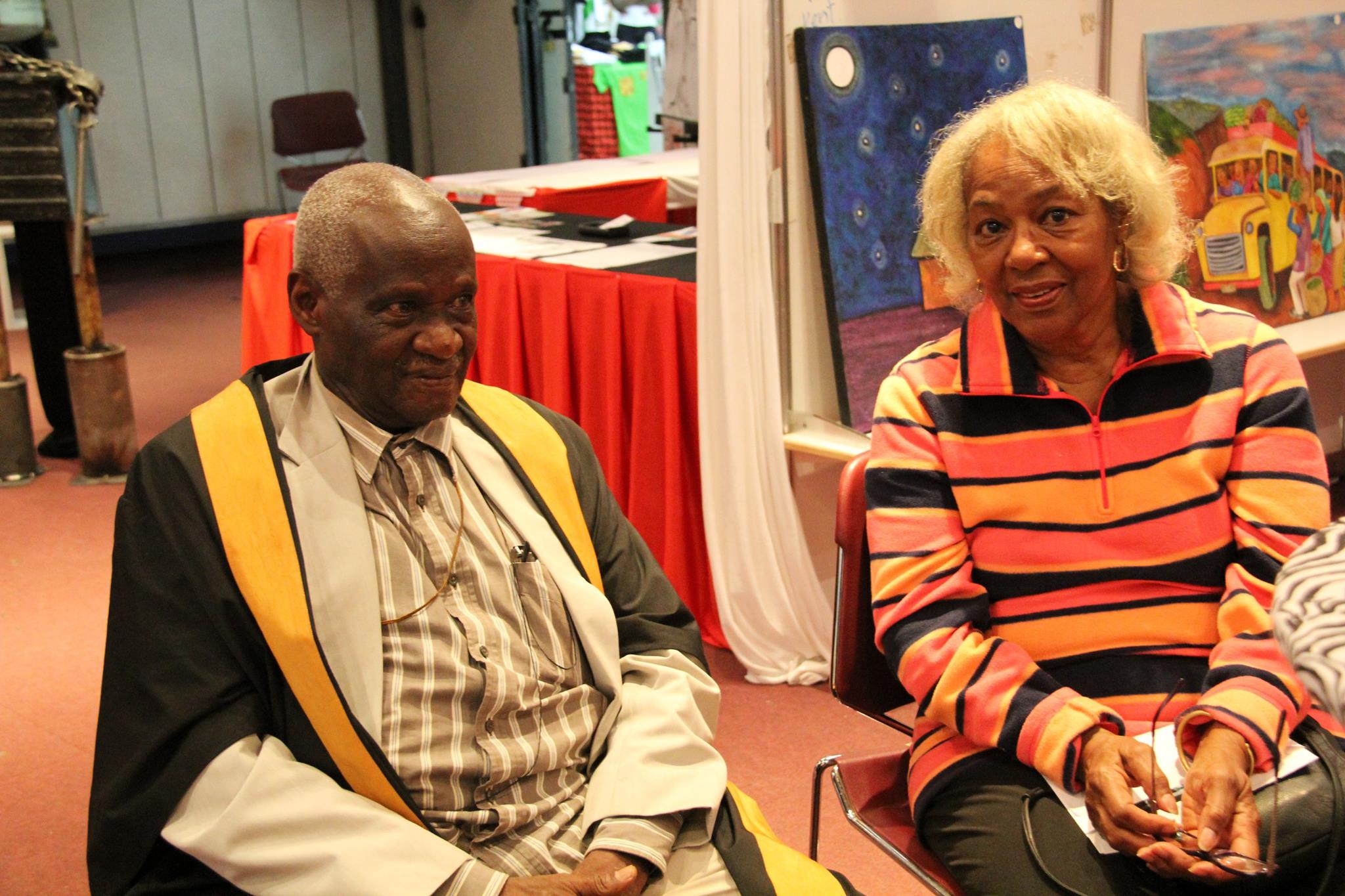
Could this lack of space be the result of the court ordered subdivision of the five-acre plot, Paa ya Paa sits on? Following a court dispute between Elimo and his first wife Rebecca Njau, a Nairobi court ordered that the land be divided into two equal parts, with the other part going to Rebecca. The last time Maisha Yetu checked, the other part, which hosts, the famous Freedom Fighter sculpture, had already been fenced off.
It now remains to be seen whether artists will heed the call and collect the pieces. This might present logistical challenges to some of them, especially those with more than one pieces, more so if they are framed, as most artists lack efficient means of transportation.
Reproduced below is the Facebook post. Note that there was a typo in the date, whereby it reads 2025 instead of 2015.
Paa Ya Paa
Call For Artists –
KARIBU CHAI
Saturday, July 18, 2025
10:30 a.m.
We invite the following artists to Paa Ya Paa on Saturday, July 18th at 10:30 a.m. to come for a cup of tea and to pick up your artworks left in storage for many years. In this our 50th year of existence, we no longer have space available. As we work toward our celebration at the end of the year, we will also share with you our calendar of activities as we look forward to the future. If your name is not listed, but you know some of the artists, please inform them just in case they have not seen this notice.
THANK YOU.
FRIENDS OF PAA YA PAA
ARTISTS: Adam Massava, Anne Mwiti, Allen Green, Allan Kangetwe, Boyd Oyier, Bevern Otieno, Caroline Mbirua.David Mundia, Dedan Kimani, Daniel Wanjau, Dan Marigi, Esther Mukuhi,Elegwa Wycliffe Swift, Ezra Joab, Evanson Kangethe, Eliud Ngugi, Evans Maina, Elias, Elian Mung’ora, Evans Mwangi, Eric Manya, Florence Ochieng, Frederick Kamau, Fred Shinzu, Henry Odero, Hussein, S.K., Hannah Turuga, Immaculate Juma, Isaac Kamau, Jimmy Matu, John Gitonga, Kibacia Gatu, Kayiira Owentebbe, Ken Artifat, Kamondia, Kayako, Lionel Njuguna, Lazarus Tumbuti, Lawy, Mike Kyalo, Moses Kabiru, Mukwana, Laura Vanessa, Morphat, Makonde, Nuru Bahati, Ngaruiya, Nduta Kariuki, Onyis Martin, Orade, Paul Owino, Paul Kihiko, Peter Murio, Patrick Kariuki, Robinson Omweri, Richard Mudibo, Sinoh, Smoki, Tony, Tabitha wa Thuku, Timothy Bonanza, Uhuru Brown, Victor Nandwa, Watindi, Hezron; Wangatho, B., Yassir Ali .
PAA YA PAA Arts Centre
0733 270 109
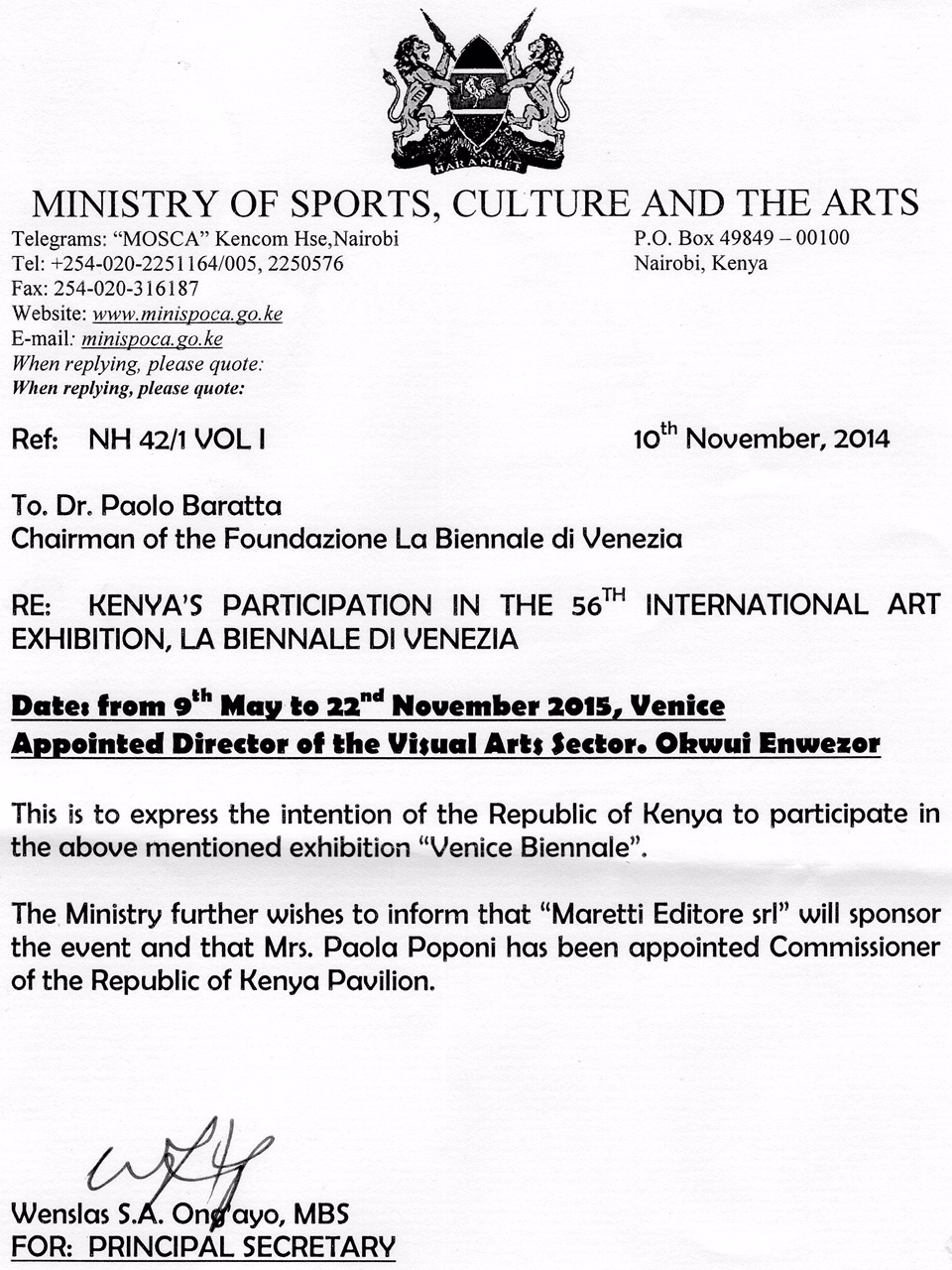
Barely a month after Culture minister disowned the ‘Kenyan Pavilion’ at the Venice Biennale, it is now emerging that a letter had been written by the ministry requesting participation at the Biennale. This is in spite of repeated denials from the ministry, including CS Hassan Wario, of the same.
Already a letter allegedly written by Wenslas SA Ong’ayo, on behalf of the Principal Secretary, expressing the intention of the Republic of Kenya to participate in the event, is doing rounds in social media circles. The letter, apparently written way back in November 10, 2014, and addressed to Dr Paolo Baratta, the chairman of the Foundazione La Beinnale di Venezia, said that “Maretti Editore srl” “will sponsor the event and that Mrs Paola Poponi has been appointed Commissioner of the Republic of Kenya pavilion,” says the letter. Onga’ayo is the director of administration at the ministry.
Matters came to a head when it was discovered that, for the second consecutive time, Kenya was being represented by Chinese artists at the prestigious event – the same happened in 2013 – popularly known as the Art Olympics. Local artists and their representatives protested and formed a delegation to seek clarification from Wario.
On April 14, the SC, accompanied by, among others, Ong’ayo, addressed a press conference at the Kenya Cultural Centre, and strenuously denied knowledge of the ministry’s connection to the people manning the Kenyan pavilion.
“Our investigations on this issue show that this happened at least twice before, in 2003 and 2013, through the involvement of Armando Tanzini, who resides in Malindi,” read part of Wario’s statement. “Tanzini and his team have presented themselves, wrongfully and repeatedly, as Kenya’s official representatives.”
During the press conference, a resolution was made to the effect that Kenya’s name and flag would be dropped from the pavilion. A letter to that effect was dispatched to Venice. That action by Wario must have caught Tanzini unawares, for he is the one that released Onga’yo’s letter, to prove that he indeed had the ministry’s backing.
Silvia Gichia, the director Kuona Trust, who was at the forefront in agitating against the Kenyan pavilion, told The Nairobian, that Tanzini called her from Italy, where he is manning the pavilion. “He was very furious and was protesting what he called betrayal by the ministry,” explains Sylvia. “He was saying that the ministry was tarnishing his name, yet they were the ones who issued him with the letter, and that is how he emailed me that letter.”
She says that Tanzini acted surprised when asked why he did not include Kenyan artists in the pavilion. “Which artists?” he retorted.
Sylvia adds that following the Tanzini’s revelations, she got in touch with Wario, who expressed disbelief at the direction the saga had taken. “He promised that action would be taken at the ministry level,” adds Sylvia.
On her part, Sylvia, who is a member of a committee – consisting of government officials and individual artists – formed to address the Biennale saga, expressed her disgust with the government. “We are disappointed with the government; Wario should be on top of his game. We hold the government responsible for this whole fiasco,” she says adding that there is a need to re-evaluate that committee seeing as their trust with the government has taken a hit.
We wrote a email to Tanzini seeking his side of the story by had not received a response by the of going to press. Calls and a text message to Ong’ayo also went unanswered. Wario’s personal assistant, who promised to get back to us once he came out of hospital.

 The first time I listened to Sauti Sol’s latest single, ‘Nerea’, in a matatu, I thought the lyrics were jarring. The conservative voice in me felt that a ‘taboo’ subject was being handled inappropriately. Yes, abortion is such a sensitive subject in our society. Despite the fact that the procurement of abortion is, today, as widespread as the common cold, it is still talked about in whispers. Any woman suspected of having procured an abortion, becomes an outcast in society.
The first time I listened to Sauti Sol’s latest single, ‘Nerea’, in a matatu, I thought the lyrics were jarring. The conservative voice in me felt that a ‘taboo’ subject was being handled inappropriately. Yes, abortion is such a sensitive subject in our society. Despite the fact that the procurement of abortion is, today, as widespread as the common cold, it is still talked about in whispers. Any woman suspected of having procured an abortion, becomes an outcast in society.
However, as the song progressed, my nerves were somehow calmed by the harmonious vocals of the group, which has teamed up with the duo of Amos and Josh, for this project. Despite their controversial nature, the lyrics are quite a revelation. The song is dedicated to Nerea, who could be any girl out there, and who is heavy with the singer’s child. It could be that, for one reason or the other, Nerea wants to terminate the pregnancy. The artist is therefore beseeching Nerea to give the unborn baby a chance in life.
They even introduce a spiritual side to it by invoking God’s name implying that it is Him who provides for every life that is brought into this world. This appears to be a direct challenge to women who justify aborting arguing that they have nothing to feed the child once it is born. The man in the song even offers to bring up the child.
The song is deceptively simple, with only two stanzas; the first one, which is also the chorus, carries the whole message of the song, while the second one enumerates what the future holds for an unborn child. It could be a future president, an actress like Lupita or an environmentalist like Wangari Maathai. However, the potency of the songs lies in its simplicity. Those lines are repeated over and over, throughout the song, to cement the message and to prick at the conscience of any woman contemplating abortion; what if the baby I plan to ‘flush’ becomes the future Obama and lifts me out of the valley of poverty?
Well, in terms of packaging a message, Sauti Sol and Amos and Josh score a strong ‘A’. It will be recalled when finer details of the present constitution were being thrashed out, the topic of abortion was perhaps the one that elicited the most heated debate with the point of departure being when life begins; during conception or at birth.
During this whole time, it was the lawyer types, civil society activists, religious persons and politicians, who were engaging each other with the finer details of when life starts; while the masses, where the real, erm, abortion takes place, watched on bemusedly, wondering why there was such a fuss.
Now enter Sauti Sol and ‘Nerea’ and the abortion narrative has now been squarely placed where it belongs; among the masses, and especially among the youth – who are most likely to be experimenting with illicit sex, the result being unwanted pregnancies and eventual abortion. The topic of abortion might appear quite abstract, even fancy, when being discussed by the opposing pro-life and pro-choice lobbies. Using art, and good art at that, Sauti Sol/Amos and Josh have brought the message uncomfortably home, and it is causing what the Swahilis call ‘tumbo joto.’
More than ever before, Nerea has quite deftly brought men into the picture. Previously, men were seen as passive participants in the whole abortion matrix; isn’t abortion about women and their bodies? The only time men are roped in, is when they fork out the ‘blood money’ used to procure the abortion, and like Pontius Pilate wash their hands off the whole thing. Otherwise men pretend to be horrified by abortion, despite them being active and sweaty participants in creating the foetus now being aborted.
When they appeared on ‘The Trend Show’ of Friday, April 24, Larry Madowo, the show’s host pointedly asked Sauti Sol, what business they had policing women’s bodies. Bien, sidestepped the question rather brilliantly by referring to the ‘nakuomba’ word they used in the lyrics, indicating that they were merely pleading with Nerea not to abort. The inference here was that the girl was at liberty to do as she wished.
The answer can be classified as false humility; misleading at best. A critical look at their lyrics indicates that they use the words ‘mimba yangu’ – loosely translated to ‘my pregnancy’. The tacit ‘ownership’ of the ‘mimba’, gives men more power while negotiating abortion choices, while also making them more responsible for the welfare of the offspring. The pro-choice lobby, which argues that the body is theirs and can as well do as they wish with it, might not like this sneaky empowerment of men.
As things stand, ‘Nerea’ has thrown a spanner in the works, a cat among pigeons as it were.
A discussion about Nerea is not complete without looking at the technical aspects of the song. The music arrangement of Nerea is what the late Billy Omala of the ‘Chaguo Lako’ fame on KBC radio, would have described as ‘vyombo vimepangwa vikapangika’. The arrangement is just right.
Polycarp opens with his easy lead guitar, the signature tune of Sauti Sol, as the listeners are familiarised with the song’s lyrics. With the two stanzas firmly in place, it is time to move to the next gear and at one minute and 13 seconds, the double bass is slowly eased into the background. This gives cue for Josh to hit the high notes with ‘nitamlea’. The vocal effect continues with Chimano’s deep bass – despite his slight stature – followed by the chorus, which is at climax. At two minutes, the other instruments including the violins take over and the vocals take a back-seat, for an interval of 15 seconds. Here, the beauty of the song shines through. Afterwards the song is on homestretch; time to relax things and bring the song to a close.
Despite their current popularity, Sauti Sol occupies that complicated space between urban mass appeal and high Afro fusion with its complicated audience, but have managed to appeal to both audiences. It is rare, in Kenya today, to find the mass market embracing musical groups that perform with the backing of a full band. They prefer simple, computer generated beats, creating what is eventually known as bubblegum pop.
Things however changed when, in their debut ‘Mwanzo’ album, the did the song ‘Lazizi’, that captured the essence of your urban culture and aspirations’ with a young man seeking to date a girl in Nairobi and taking her to Java, where not many can ordinarily afford to patronise. ‘Lazizi’ earned them a legion of urban youth, and who refused to let go. This effectively marked a turning point with Sauti Sol, who in order to serve their newly acquired fans, found themselves steadily pulling away from the donor/expatriate spaces they had been courting at the beginning. This has been exemplified by the song Gentleman, a collabo they did with urban pop group P Unit.
They have however maintained their sophisticated musical roots, not once abandoning the full band; ‘Sura Yako’ and ‘Nerea’ attests to this. It can be argued that Sauti Sol introduced Nairobi youth to the finer details of music.
Sauti Sol’s crowning moment came when they shared the stage with internationally acclaimed South African Acapella group, Lady Smith Black Mambazo, to perform ‘Diamonds on the Soles of her Feet’, a collabo with Paul Simon. Bien did Paul Simon’s lyrics, much to the applause of the audience and respect from the Joseph Shabalala’s outfit. Finally, Sauti Sol had arrived at the international stage.
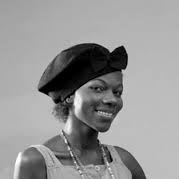
Maisha Yetu caught up with Ndinda and had a chat on what it means to win the coveted schorlaship. Read on
Maisha Yetu: Explain to our readers what the Morland Award is all about?
Ndinda Kioko: It is a writing scholarship that is awarded annually by the Miles Morland Foundation to three writers from Africa. Each of the winners receives a grant to allow them to take a year off and write a book.
MY: How does it feel to be a recipient of the Morland Award?
NK: When I first received the news, I was shocked, followed by a deep sense of gratitude. Now that the excitement is finally settling in, I am a little terrified by the responsibility that I have to myself; the responsibility of writing that novel that I have wanted to write for so long. There is something deeply satisfying and equally frightening about finding yourself on the path towards your dream.
MY: What does the award mean to you?
NK: The scholarship came at a time when I was thinking of pausing everything to focus fully on writing. But then there is also that uneasiness that comes with leaving the comfort of a paying job to immerse yourself into the eternal darkness of writing. The reality is that, it is hard to make a living as a writer, and in between a 9 to 5 job, one can barely find enough time to make significant progress. This is not to say that it is not doable. There are those who have managed to maintain an equilibrium between the two. This scholarship means that I can now finally pull down the shutters and concentrate on my writing for a sustained period of time without the previous distractions and limitations. I am also hopeful that this opportunity opens a door for other literary endeavors.
MY: This seems to have been quite an eventful year for you. You were also recognized as one of the Africa39 authors. Tells us more about this.
NK: This also came as a surprise. It is not a small thing to be recognized as one of the 39 promising writers under the age of 40 in Africa south of the Sahara, especially when all you have to show for it is a bunch of short stories. Even more humbling, to be recognized alongside people you have read and admired for years. But beyond the honor, the excitement and the shock comes a reminder that I need to take writing seriously; that I need to stop looking at writing as something that merely punctuates my life. This is what I am here to do, and I need to do it constantly for as long as I am here.
MY: What motivated you to become a writer?
NK: I can’t really isolate that exact thing or person or moment that got me started. Growing up, I did not have the luxury of a television, so all my childhood was immersed in books. I have indistinct memories of reading John Steinbeck and not understanding a word. But what populated my childhood was a lot of Nancy Drew, John Kiriamiti, newspaper cuttings, to mention but a few. I can say that reading got me interested in writing, but I know I am a result of many things.
MY: Who are your role models; local and international?
NK: There are a lot of writers whose work I admire, who have influenced me greatly. I can’t possibly fit them here. The world is a hovel of atrocities, and there are writers like Toni Morrison who take away my restlessness. And I think this is the most powerful thing about being a writer- that through your writing, other people are able to survive the world. If I can do that for just one person, then my work here will be done.
I wish Mariama Bâ had stayed around longer. I am constantly craving for her writing, and I feel like I have reread her enough already.
My stylistic admiration at the moment belongs to Ali Smith, who was shortlisted for the 2014 Man Booker Prize. She writes from a space of formlessness, which is something I am very much drawn to. She plays by the rules yes, but at the same time, she stretches these rules to see what reinventions are beyond the rules.
I have utmost respect and admiration for Yvonne Owuor, Jeniffer Makumbi, Okwiri Oduor, Teju Cole, Ousmane Sembène, NoViolet Bulawayo, JM Coetzee, Junot Diaz; it’s a long list.
MY: What proposal did you submit and when should Kenyans expect to read you?
NK: I think it is too early to tell, and too early to talk about the project. All I can say is that I am charting a journey of remembering by exploring the relationship between a dead mother and a daughter. When should Kenyans expect to read it? Even I do not know. I am in no hurry. I want to take my time with it.
MY: What is your strongest point/ what is your style of writing? Prose/poetry?
NK: I write prose. I am still trying to understand myself as a writer, so I can’t quite speak of ‘a style’ that I can be identified with. I will let that be a burden of those who read me. But I am drawn to writing that is not so pedantic; writing that invents and reinvents and leaves you feeling like the writer has broken the law.
MY: Mile Morland says that he was blown away by the quality of this year’s entries. What about your submission blew him away?
NK: To be honest, I’ve also been wondering about that.
MY: Recently, we’ve seen Okwiri Oduor win the Caine Prize and now here you are; can we say that this is the time of the Kenyan woman writer?
NK: I don’t want to give that phrasing a nod. A lot of writing by Kenyan women precedes us. Writers like Yvonne Owuor, Grace Ogot, Margaret Ogola, Moraa Gitaa, Phyllis Muthoni, Njeri Wangari, and Marjorie Oludhe. However, I do recognize a dead gap between, say Yvonne Owuor and Margaret Ogola. And it is not because no one was writing, but because no one was paying enough attention. I am glad we are here now, and that more Kenyan women are getting published and that we are paying attention to their stories.
MY: What have you been doing prior to winning the prize?
NK: I have been writing and producing two TV shows for Mnet. The first project, titled How to Find a Husband is a sitcom that follows the life of three women living and surviving Nairobi as they try to find, lose, escape and keep love. We just finished filming the second project, a 26-episode political drama which we are currently editing. The shows are set to premiere early 2015.
MY: What are your views on Kenyan writing in general?
NK: I am excited to see the writers of our generation taking matters into their hands and creating spaces for themselves. Spaces like Jalada are a product of that. There is a lot of wonderful writing that stands a danger of disappearing into oblivion, and these spaces that are being created by writers’ collectives are there to minimize that danger. Traditional publishers can’t do it all on their own. I am also glad to see poets like Michael Onsando and Abigail Arunga taking the bold self-publishing step. It is an exciting time to be a writer in Kenya.
MY: Your message to younger writers who will now look upon you for inspiration, and especially those who might not have the opportunity to submit for either Caine or Morland
NK: Buy a notebook, and use it.

Despite the challenges facing the local writing industry, writer Onduko bw’Atebe prefers to see it as a half full glass rather than half empty. “The Kenyan writing scene is changing for the better,” he says. “More people are getting into the scene which is a good thing.”
Atebe’s book Verdict of Death, published EAEP, won the inaugural Wahome Mutahi Literary Prize in 2006. The prize is awarded by the Kenya Publishers Association (KPA) every two years in honour of the late humourist Wahome Mutahi of the Whispers fame. It alternates with the more established Jomo Kenyatta Prize for Literature, also ran by KPA.
Towards the end of September 2014 KPA announced Yusuf Dawood as the fifth winner of the Wahome Mutahi Literary Award with his book The Last Word, which is a collection of past episodes of his Surgeon’s Diary column. He beat off competition from Nation editor Ng’ang’a Mbugua, who had submitted This Land is our Land (Big Books), a collection of poetry, and A Gift from A stranger (KLB), a play written by University of Nairobi lecturer Waigwa Wachira.
It is worth noting that Yusuf Dawood pocketed sh50,000, the same amount Atebe won eight years ago. In the intervening period the cost of living has shot up, inflation has given Kenyans a hiding and still writers get the same amount of money for an effort that took them the better part of four years. It is any wonder Kenyan writers do not have enough motivation to write?
Atebe took time off his busy schedule to talk about the award and Kenyan writing in general. While acknowledging that things could be better he nevertheless feels that positive strides have been made in the writing scene. “Some of our Kenyan authors have made their presence known on the international scene,” he offers. “Billy Kahora of Kwani? has been nominated twice for the Caine Prize for African Writing. Vyonne Owuor’s blockbuster Dust is currently scorching the literary world. Compared to eight years ago Binyavanga has firmly established himself in the international literary scene.”
“Let us also not forget Okwiri Oduor who won the Caine Prize this year with her short story My Father’s Head. You see, good things are happening on the local writing scene. With such shining examples our children have something worthwhile to aspire to,” says Atebe.
In spite of the progress he has enumerated Atebe is however convinced that a lot needs to be done to improve the welfare of local writers; those who do not have international connections like the ones he has mentioned above. “The uncomfortable truth is that it can be difficult for someone to make ends meet through writing alone in Kenya,” he explains. “You see after my book won the prize I thought I would live off writing. I even took an initiative to market it in schools across the country but at the end I realised that my expenses far outstripped what I was making.”
Faced with the stark reality of a shrivelled bank account Atebe decided to cast his net wider and veered off into business. “Here in Kenya you need a firm financial background only then can you embark on writing,” says Atebe who today is a contractor in the rural electrification sector.
His business endeavours however have left him with little time to put pen on paper. “My work eats up most of my time,” he says. “I am forever on the road; come evening I am exhausted and sleepy.” Verdict of Death remains his only book. “I had a completed manuscript but it was destroyed when a virus wreaked havoc on my computer. I spent a lot of time grieving over the lost manuscript.”
He assures his readers that if all goes well they will be reading another of his books in the ‘near future’. “I have two incomplete manuscripts I am working on. The good thing is that I am not new in the field of writing,” he explains. “A number of publishers have approached me asking me to write for them, so I am not short of options.”
Atebe asks Kenyan publishers to pull up their socks as far as marketing creative works is concerned. “They don’t do much marketing which explains why readers are not aware of what is available by local authors,” he says. He disputes the notion that Kenyans do not read. “Visit any local bookshop today and you will see stacks and stacks of novels, only that they are by Western authors. You can’t buy something you are not aware of” he adds.
He faults his publisher EAEP for not doing enough to market his book after it won the Wahome Mutahi Prize. “The least they would have done it to ensure that subsequent editions have a stamp indicating that it won a prize. That would have helped boost the sales,” he explains.
He is happy that Yusuf Dawood won the Wahome Mutahi Prize. “I really enjoy reading what the good surgeon writes,” says Atebe.
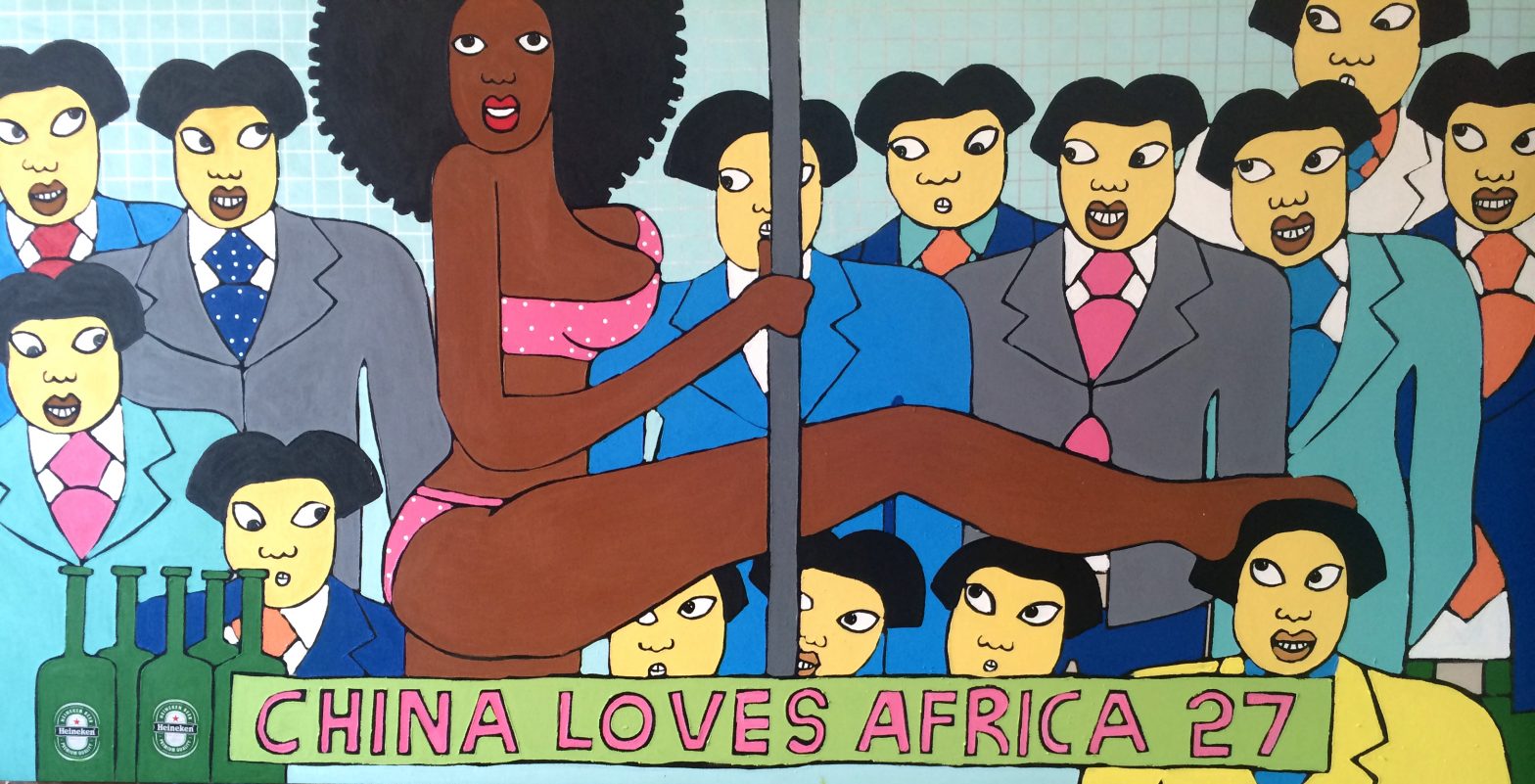
A few months ago visual artist Michael Soi, based at the Godown Arts Centre in Nairobi, found himself on the receiving end Chinese visit who felt that he was giving their country a bad name in spite of the ‘good things’ China was doing for Africa. The visitors had been in the delegation of the Chinese Prime Minister, who had been a guest of President Uhuru Kenyatta.
The bone of contention had to do with China Loves Africa, a series of satirical paintings poking fun at the duplicitous nature of China’s relations with Africa. Far from silencing Soi, the visit must have served as an incentive to spur him on. In his latest piece, China Loves Africa 27, done on September 30, Soi depicts a group of well-suited Chinese ‘gentlemen’ ogling the bikini-clad body of an African pole dancer.
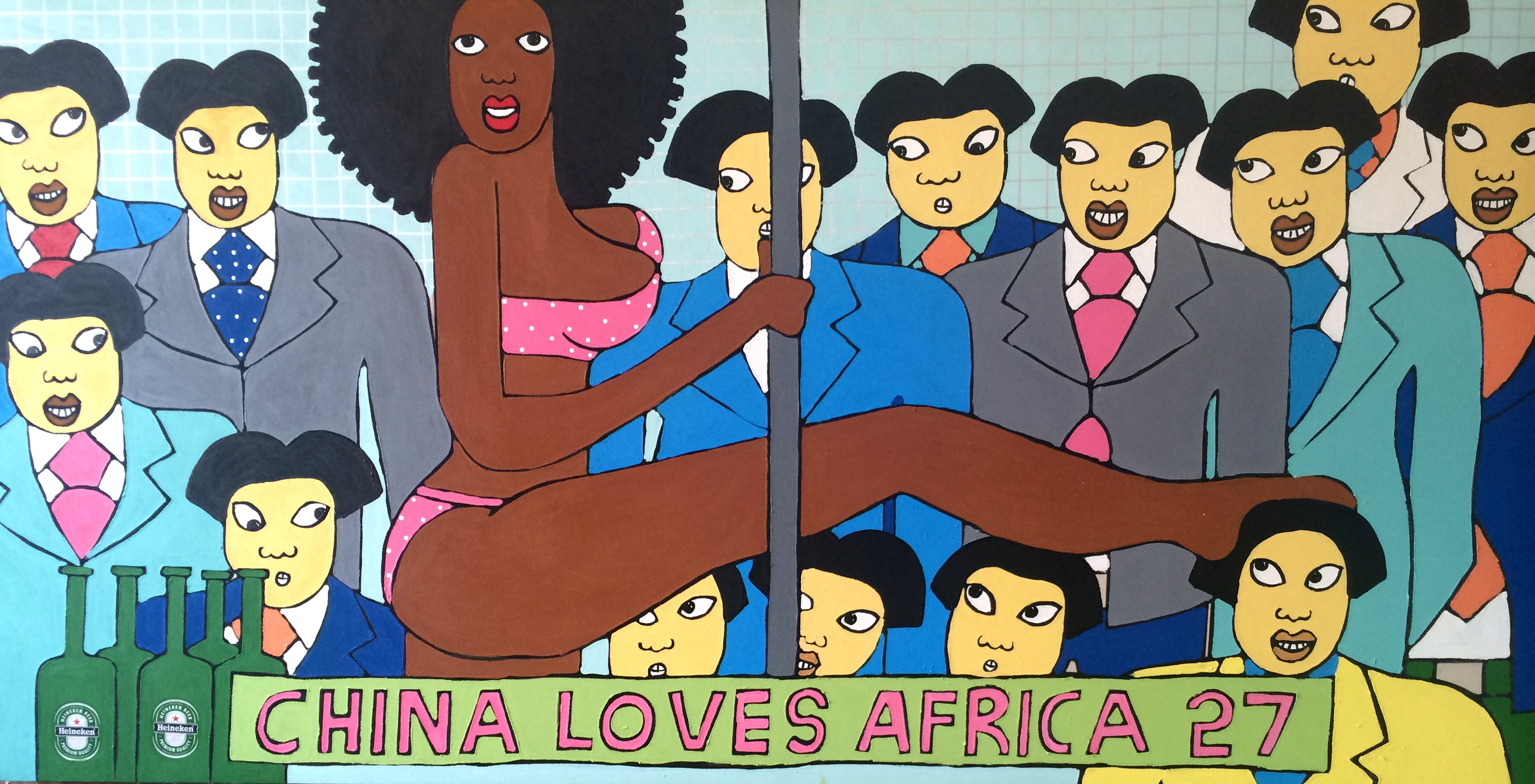
The message of Soi’s art is that China is only interested in the ‘fundamentals’ of the African continent depicted as the body of a well-endowed African woman, and that the trade is merely the excuse for raping the continent’s resources. Africa is depicted in the unflattering light of a woman of easy virtue, hawking her ‘products’ to the highest bidder.
Conservationists have for some time now been complaining that China’s gigantic appetite for animal trophies is responsible for the dwindling population of wildlife in the country, especially elephants and rhinos. Publishers have now entered the fray and without mincing words are accusing the Asian giant of abetting Intellectual Property (IP) crimes by allowing pirates to print their books in China without carrying out due diligence.
Publishers under their umbrella body the Kenya Publishers Association (KPA) say that if the government does not check the activities of book pirates, the publishing industry, as we know it will be brought to its knees. Piracy is slowly but surely proving to be a publisher’s worst nightmare. Pirates target the fast moving books, print them illegally and flood them in the market at throw away prices, thus undercutting the original publishers.
Today, pirates are not only targeting the fast selling books but are also picking on any book that is guaranteed even modest sales and having them printed offshore, with China and India being the most preferred locations.
Publishers have for the longest time been howling in the wind with no one to listen to them. However things were different on Saturday September 27, when none other than the Attorney General graced the Wahome Mutahi Prize gala night, which is organised by KPA.
Seizing the occasion, Lawrence Njagi, the chair of KPA told Prof Githu Muigai how book pirates are threatening to wipe out the gains Kenyan publishers have made over the years. “If pirates are not stopped in their tracks in future we might not be able to congregate here to celebrate the efforts of writers,” he said.
Njagi urged the AG to oversee the crafting of stiffer penalties aimed at deterring Pirates once and for all. He called for the empowerment of the Kenya Copyright Board (KECOBO) such that it is mandated to clear all educational materials, including book, being imported into the country. “That way it will be easier to know who is bringing in what into the country,” he explained. “Pirates will think twice before shipping their containers of pirated books.”
Kakai Karani, who heads the anti-piracy committee at KPA, urged the AG to ensure that IP Crimes are elevated to the more serious economic crimes. “The current sh800,000 slapped on pirates is small potatoes to the big pirates who might have shipped in books worthy more than sh5 million,” noted Karani.
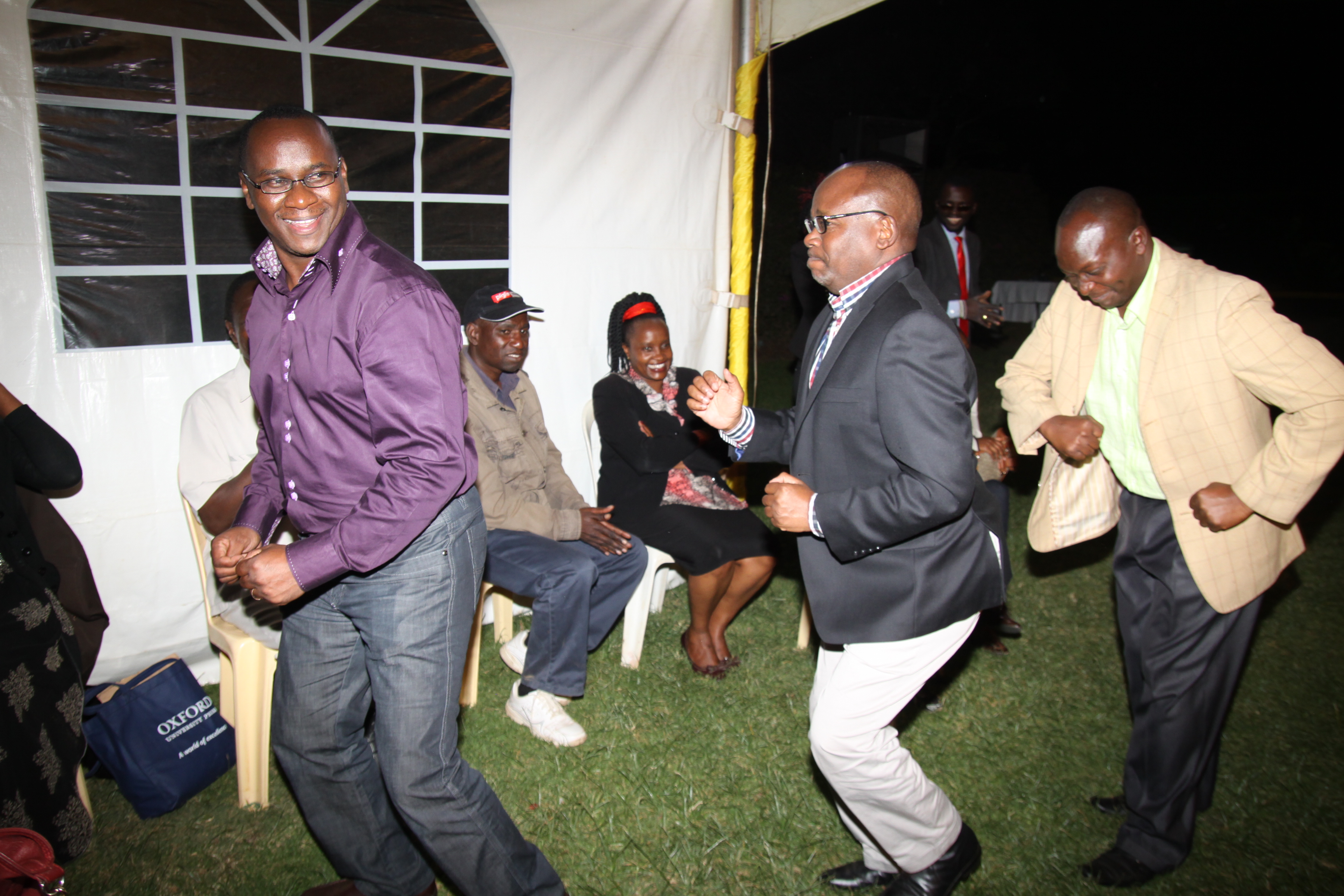
They must have been preaching to the converted for the AG promised to “fight the pirates living off your sweat.” He touched of the small matter of rebasing the economy – which had by then not been formally implemented – and explained that the intellectual property sector which previously not been factored in economic projections was now one of the pillars of the economy that catapulted Kenya to middle income status.
“I know, only too well, the heartbreak of having to stare at a blank screen for hours,” said the AG as he revealed that he has been attempting to write a fictional short story for the last ten or so years without success.
The import of his statement was that matters that affect the IP sector, like piracy, will be dealt with with the seriousness they deserve. No one wants Kenya slipping back to the low income strata.

While President Uhuru Kenyatta was visiting the US, greater focus was, understandably, on the details of the trade talks as well as the fact that Kenya was trying to mend fences with Barrack Obama’s (Cousin Barry to some Kenyans) country, seeing as America’s ‘Choices have Consequences’ edict, in reference to Uhuru’s ICC case, had pulled the two countries apart.
Focus was to later dramatically shift to President Kagame’s daughter (you know how that one went). Much later Uhuru was pictured in a Stetson – here in Kenya we call the godfather or godpapa – holding somewhat oversized American cowboy boots – gifts he was given by Texas cowboys, who also made him an honorary citizen. Although he eventually did visit George Bush Jnr – he of ‘you are either with us or the enemy’ – not much was said about a piece of ‘cloth’ the two were pictured holding.
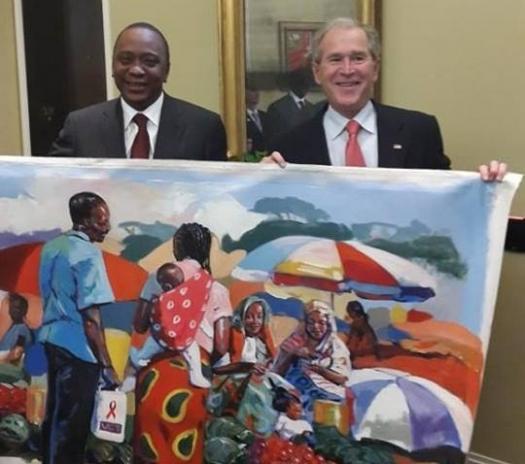
Well, that piece of cloth was a painting Uhuru donated the former US president – don’t ask how they came to know each other, I don’t know either. Turns out the Uhuru appreciates art – Kenyan art to be specific – that he considered it important enough to give it to a former US president as a gift.
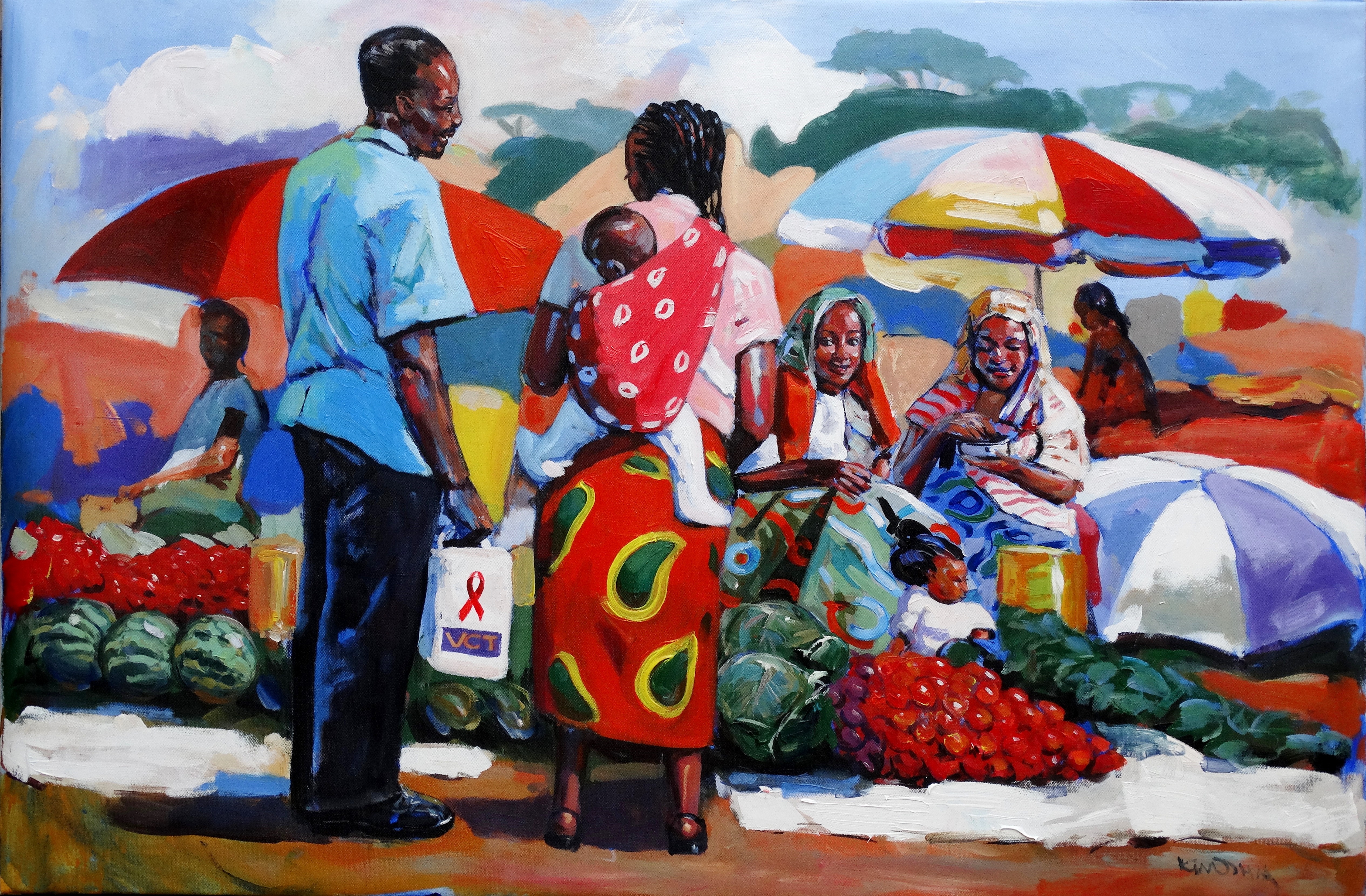
I did a little digging and realised that the painting is titled Ni hoja, lakini sio hoja (It is an issue but not an issue) – confusing huh? Well that is what artists do sometimes; confuse people – done by Patrick Kinuthia.
The painting, an acrylic on canvas, measuring 100 by 150 cm, features a couple standing before a group of women in an open air market. From the picture, it would appear like the man is trying to tell the woman, with baby strapped on her back something. The woman is either ignoring the man or is pretending not to hear.
From the picture is not clear whether the man and woman are a couple or not. Curiously though the man is clutching a package with the letters VCT clearly written on it. Could it be that the couple have just from a VCT centre? Who between, the man and the woman is saying the words ni hoja, lakini sio hoja? More importantly, why would they chose to have such a conversation in a public place.
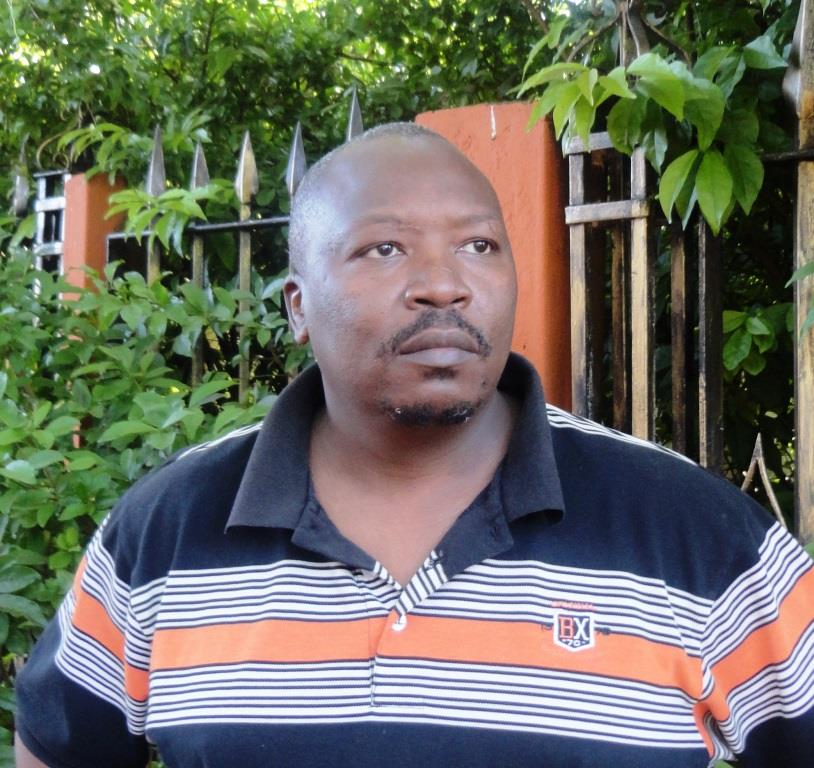
Still, could the man be a health worker trying to convince the women in a market place to go and have their HIV statuses checked? Questions, questions and more questions. Incidentally, that is what a good artist is supposed to do; provoke your mind into thinking. And as they say, you take what you see in a piece of art. Hopefully, George Bush will have his own interpretation if he hangs the painting in his office.
William Ndwiga, the director of The Little Art Gallery says he received a call from the Kenyan ambassador to the US, asking for a ‘high value painting that can be displayed in a museum in the USA, for posterity’. He disclosed that the piece of art was bought for sh350,000 (approx 4,000 usd). “I see The Little Art Gallery running Art exhibitions by Kenyans in Kenyan embassies, around the world, to showcase what Kenya has to offer to the world. I have already started this process,” explains Ndwiga.
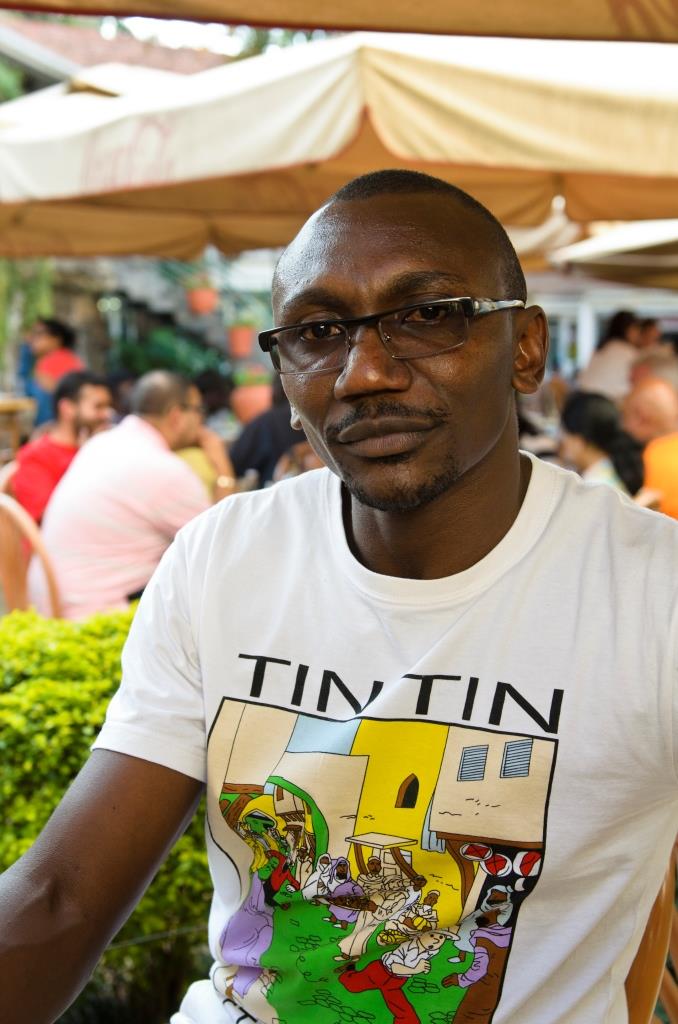
Kinuthia’s bio says his paintings ‘reflect both a freestyle approach as well as a disciplined observer of human and animal form behaviour’. Born in 1967, Kinuthia worked for Citizens Cinema Cooperation as a poster artist for its cinema halls, making scenery and portraits under the tutelage of Pakistani artist Mohammed Rafiq. Kinuthia is based in Banana Hill.
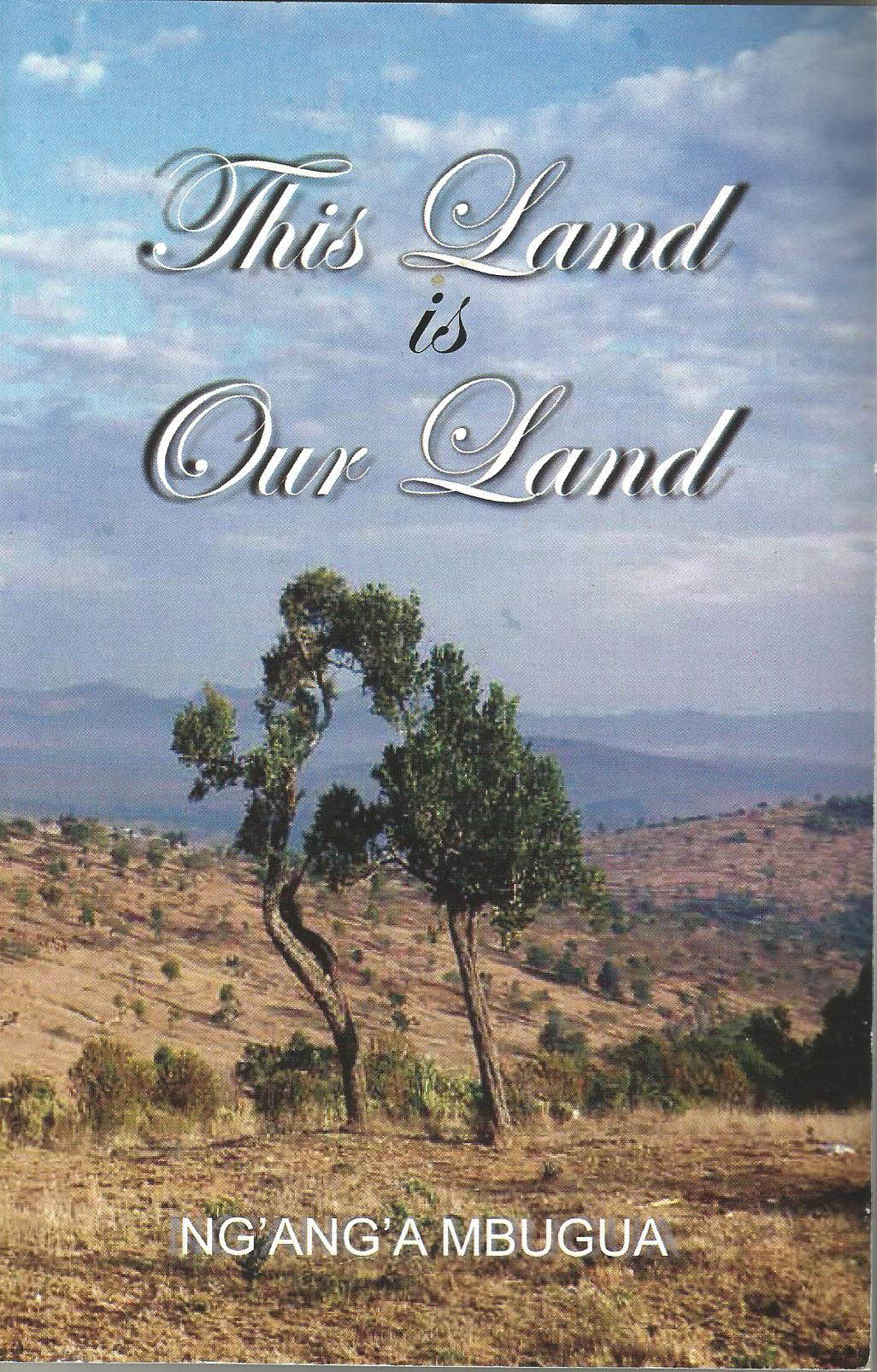
This year’s Wahome Mutahi Literary prize is shaping up to be another epic battle between surgeon Yusuf Dawood and journalist Ng’ang’a Mbugua. They both have been nominated in the Adult English category of the award set to be delivered at the end of September.
Dawood’s book The Last Word, published by Longhorn a collection of essays that have been published in the Surgeon’s Diary column in Sunday Nation, has been nominated alongside Mbugua’s book This land is our Land, (Big Books) a collection of poetry. The other nominee is a book titled A Gift from a Stranger (KLB) authored by Waigwa Wachira.
The first contest between the two took place in 2011 when Dawood’s novel Eye of the Storm was nominated alongside Mbugua’s Terrorists of the Aberdare. Eye of the Storm took the ultimate prize with Terrorists of the Aberdare coming in at second. Literary observers agree that it was a close contest.
In 2012 the two writers were at it again. Dawood’s book Eye of the Storm was again in contention, this time for the Wahome Mutahi Prize against Mbugua’s Different Colours. This time Mbugua took home the prize. Mbugua is a veteran of the Wahome Mutahi Prize as Terrorists of the Aberdare had won the prize in 2010.
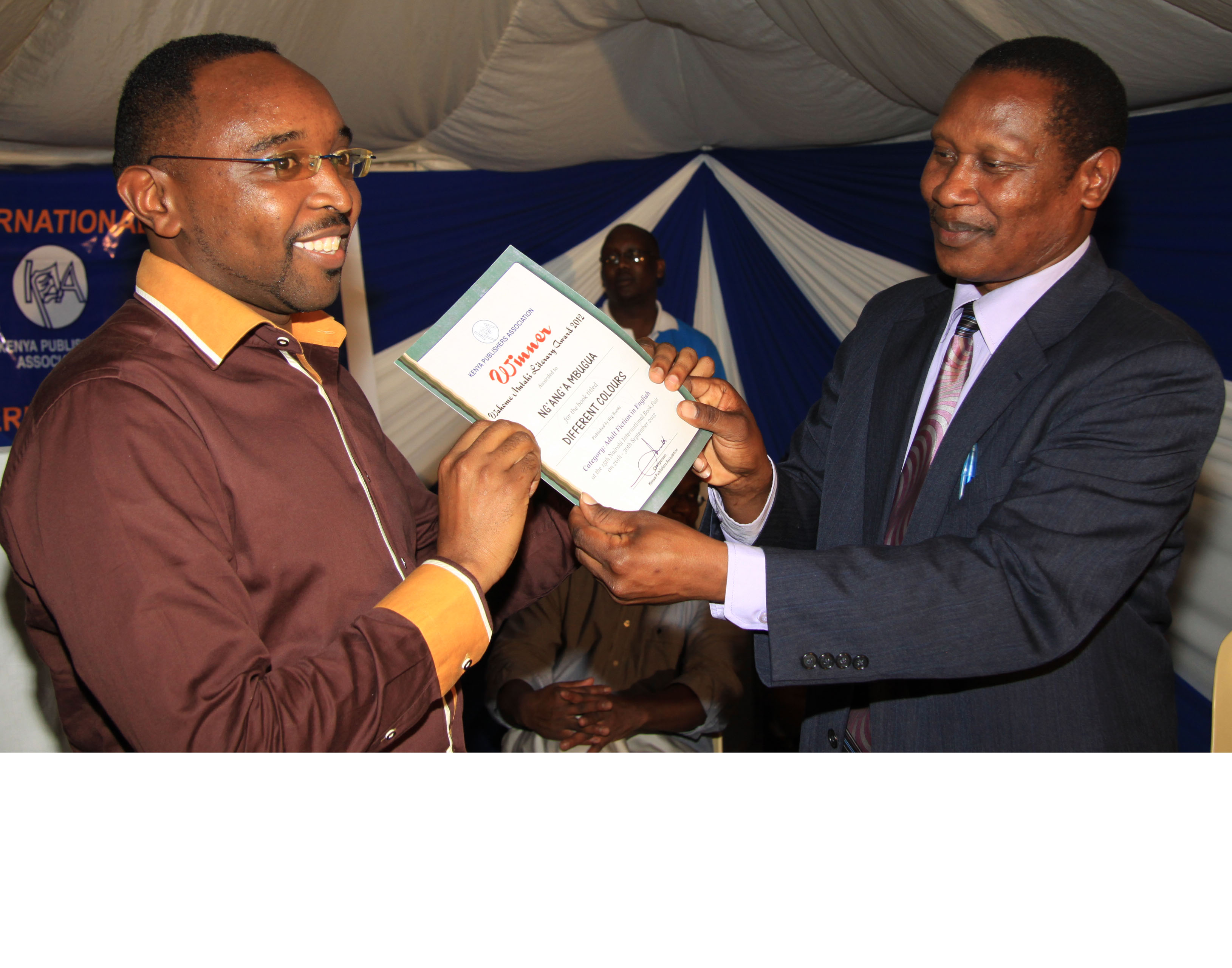
The Wahome Mutahi Literary Prize is held every two years in honour of the late humourist and novelist Wahome Mutahi of the Whispers column fame. It is organised by the Kenya Publishers Association and held at the end of the annual Nairobi International Book Fair.
There are four different categories to be awarded in the Wahome Mutahi Prize, namely English Adult, Kiswahili Adult, English Children and Kiswahili Children categories. The two children’s categories were introduced for this year’s Award.
Nominees in the Kiswahili Adult category are Juma Namlola’s Kula kwa Mheshimiwa (JKF), Tom Olali’s Watu wa Gehenna (JKF) and Jeff Mandila’s Upepo wa Mvua (JKF). In the Children English category, the nominees are Charles Gecaga’s Kuti makes a Difference (KLB), Naomi the Detective by Joseph Muleka (KLB) and A Note for Alice by Mureithi Maina (Moran).
In the Kiswahili Children category the nominees are John Kobia’s Maskini Punda (KLB), Kiswahili Gani by Lilian Wairimu (KLB) and Bitugi Matundura’s Adhabu ya Joka (Longhorn). Winners in each category will take home a cash prize of sh50,000.
A win for Ng’ang’a will be a major boost for Kenyan poets at it will be the first time a collection of poetry will be winning a major literary prize in the country. Literary prizes in Kenya are seen to only recognise prose writers. The Wahome Mutahi Literary Prize however has demonstrated its flexibility when the prize was awarded to activist Okoiti Omtata’s play Voice of the People in 2008.
Check out our review of Mbugua’s poetry book.
The judging panel consists of Dr Tom Odhiambo, as chair, of University of Nairobi, Prof Wangari Mwai of Kenyatta University and Rose Mavisi of Catholic University.